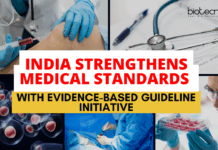A research team led by scientists at UC San Francisco has developed a computational method that could make the discovery of new drugs for cancer and other diseases more efficient by systematic analysis of massive amounts of open-access data.
The method enables scientists to bypass the usual experiments in biological specimens and to instead do computational analyses, using open-access data to match FDA-approved drugs and other existing compounds to the molecular fingerprints of diseases like cancer. First, to identify cancer gene signatures, the research team probed The Cancer Genome Atlas for data and compared available gene signatures for tumors with adjacent healthy tissue (from human tissue samples). They then searched the Library of Integrated Network-based Cellular Signatures L1000 data set to determine the effect compounds had on the gene expression of those signatures. Next, they mined the database ChEMBL for drug-efficacy data. Lastly, the team probed the Cancer Cell Line Encyclopedia to map cell lines in the other databases.
The specificity of the links between these drugs and the diseases they are predicted to be able to treat holds the potential to target drugs in ways that minimize side effects, overcome resistance and reveal more clearly how both the drugs and the
diseases are working. The team quantified the likelihood of each identified drug candidate to reverse cancer gene expression; this measurement was called the Reverse Gene Expression Score.In a paper published earlier this month in Nature Communications, the team details the method to identify four drugs with cancer-fighting potential, demonstrating that one of them–an FDA-approved drug called pyrvinium pamoate, which is used to treat pinworms–could shrink hepatocellular carcinoma, a type of liver cancer, in mice.
Cancer researchers usually target individual genetic mutations, but said the first author of the study, Bin Chen, assistant professor with the Institute for Computational Health Sciences (ICHS) and the Department of Pediatrics at UCSF, says drugs that are targeted in this way often are less effective than anticipated and generate drug resistance.
He said a broader measure; something in league with RGES might be able lead to better drugs and also help researchers identify new drug targets. And because RGES is based on the molecular characteristics of real tumors, Chen said it also may be a better predictor of a drug’s true clinical promise than high-throughput screening of large panels of drugs and other small molecules, which are based on drug activity in lab-grown cell lines.





























